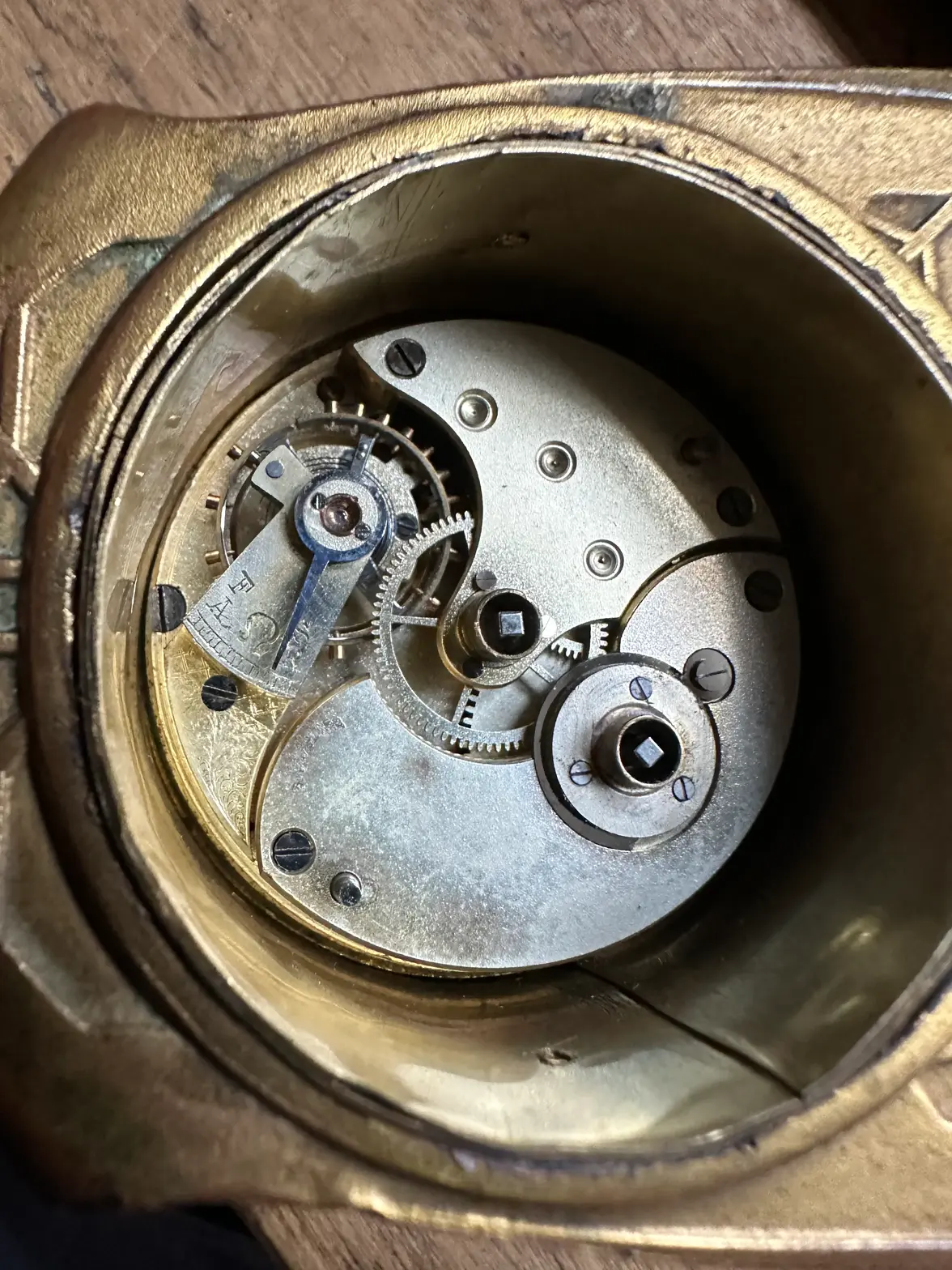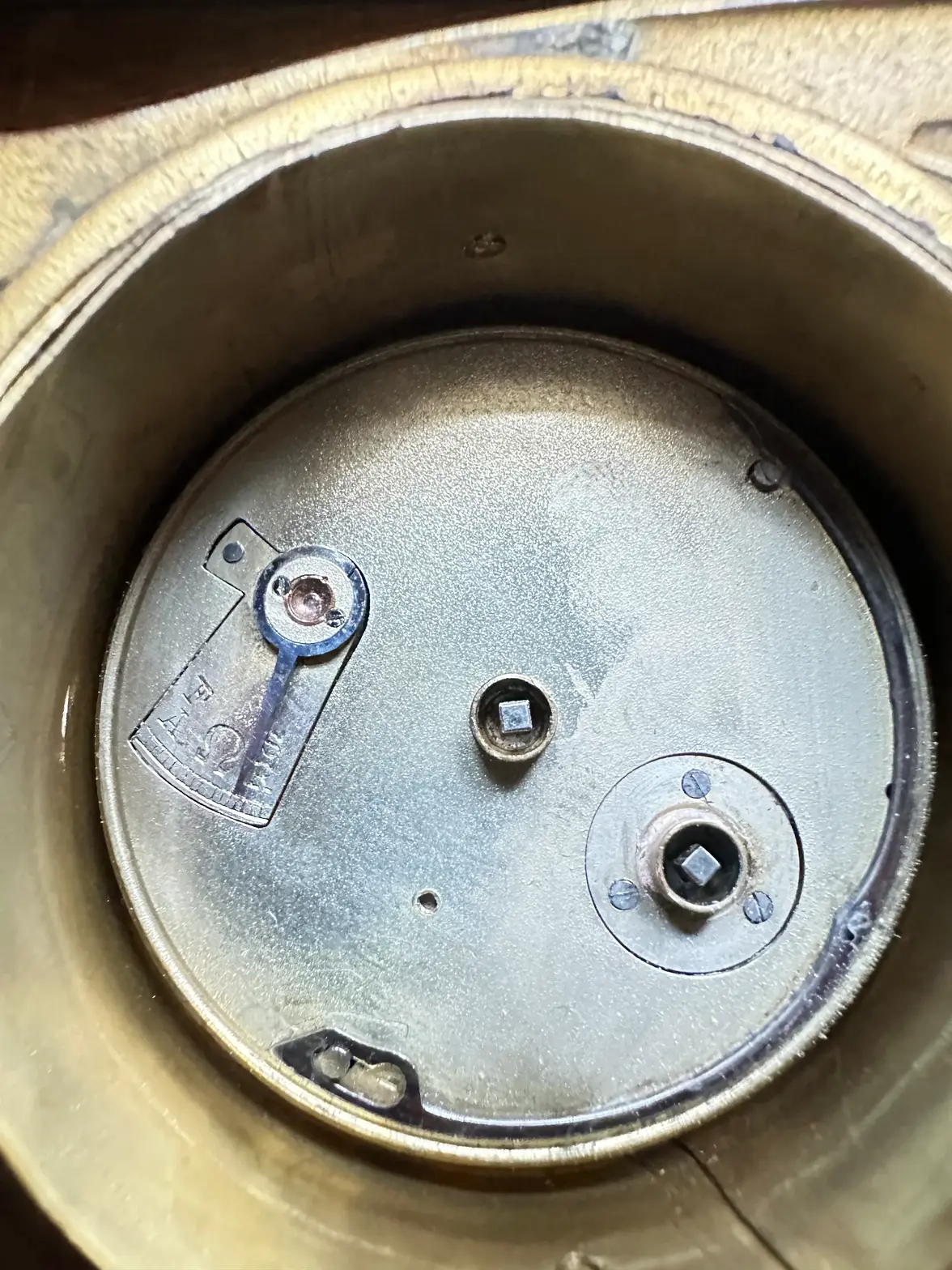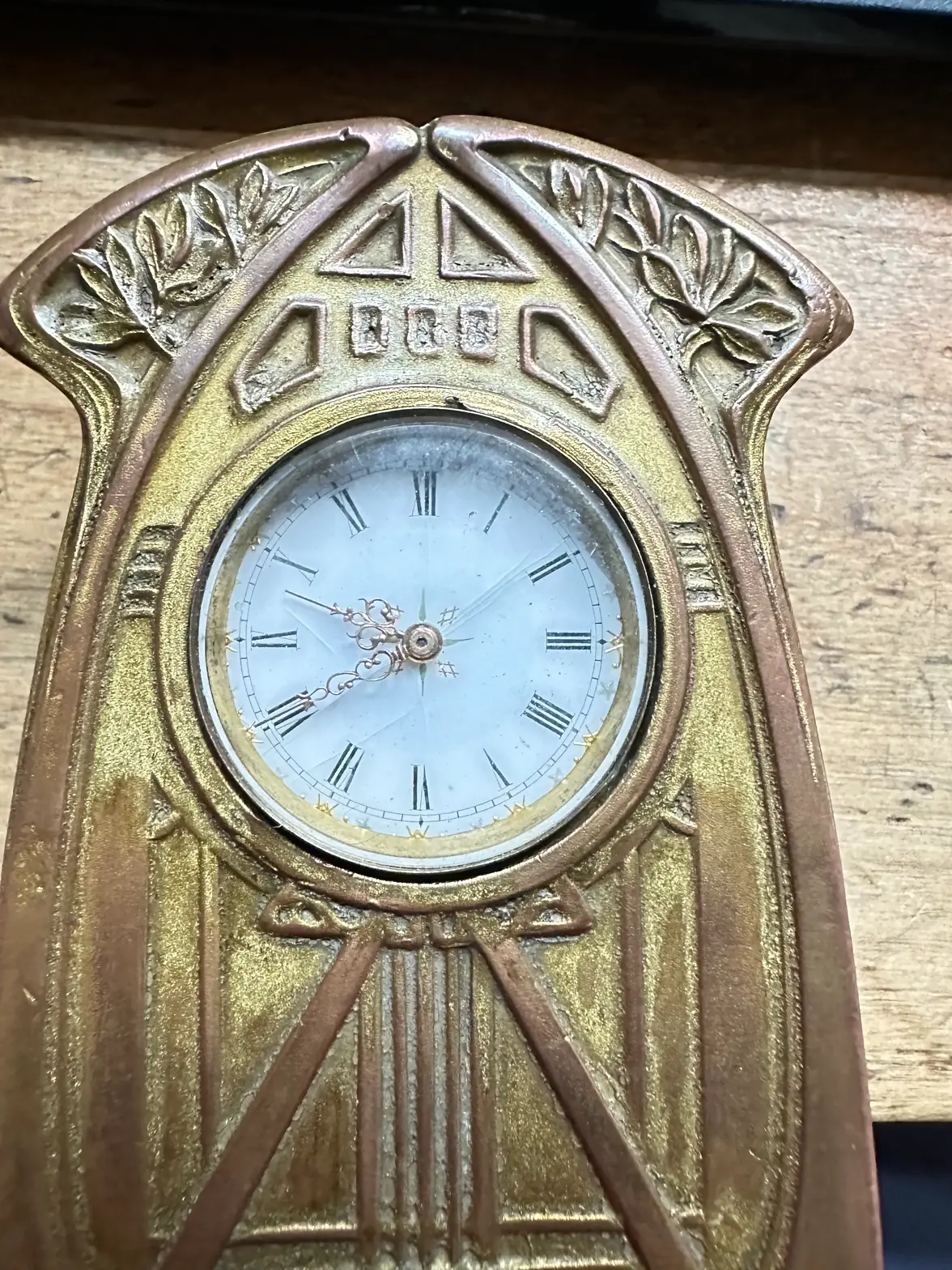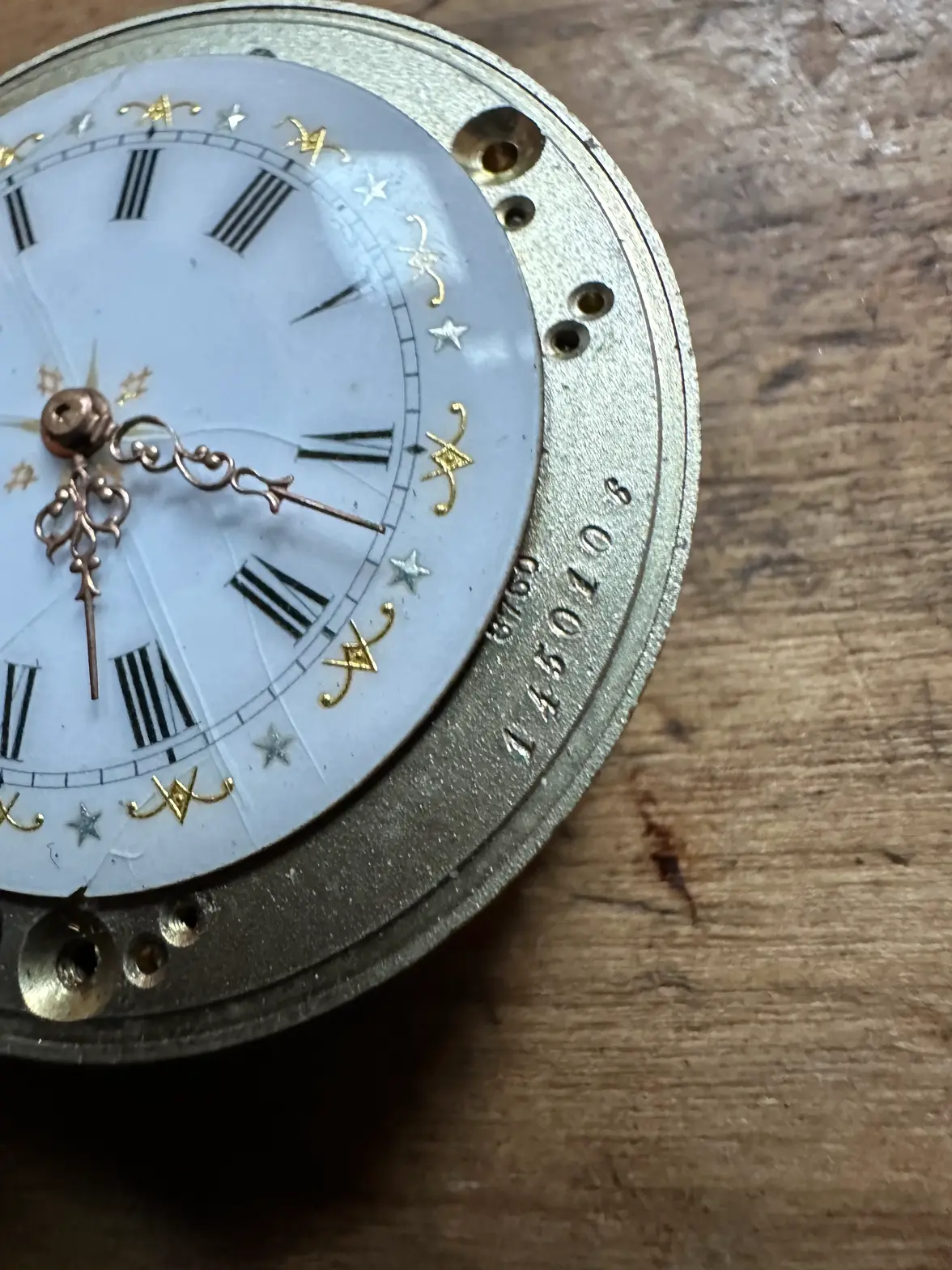Can anybody tell something about this watch / clock?
DON
·Doesn’t appear to be an Omega movement. Looks like someone cut the Omega symbol into the balance bridge
Doesn’t match the caliber 12 if you search on it
Doesn’t match the caliber 12 if you search on it
Foo2rama
··Nowhere near as grumpy as he used to be...I think that’s an Omega balance bridge grafted onto another movement.
OMTOM
·The movement looks like an Omega 19''' key-wound. What makes you think it is a 12'''? What is the diameter of the movement?
They were produced over quite a long period (roughly 1900 to 1910). Reference 525.19.
This was presumably because of a market still existing amongst 'traditional' customers who still wanted a key-wound watch.
The success of the 19''' was largely because of the 8760 patent (stem-wound and -set) - but the key-wound still sold.
They were produced over quite a long period (roughly 1900 to 1910). Reference 525.19.
This was presumably because of a market still existing amongst 'traditional' customers who still wanted a key-wound watch.
The success of the 19''' was largely because of the 8760 patent (stem-wound and -set) - but the key-wound still sold.
Rent
·The movement looks like an Omega 19''' key-wound. What makes you think it is a 12'''? What is the diameter of the movement?
They were produced over quite a long period (roughly 1900 to 1910). Reference 525.19.
This was presumably because of a market still existing amongst 'traditional' customers who still wanted a key-wound watch.
The success of the 19''' was largely because of the 8760 patent (stem-wound and -set) - but the key-wound still sold.
you are right, I thought it looked like caliber 12 but as you say it is a ligne 19. I took the movement out and under the dial it says 8760 and serial number dating it from around 1897.
but I didn't know there key wind Omega's too.
thanks for youre reply.
Rent
·sorry for late response
you are right, I thought it looked like 12" but as you say it is a ligne 19. I took the movement out and under the dial it says 8760 and serial number dating it from around 1897.
but I didn't know there key wind Omega's too.
the plate at the winding part is also very different.
OMTOM
·sorry for late response
you are right, I thought it looked like caliber 12 but as you say it is a ligne 19. I took the movement out and under the dial it says 8760 and serial number dating it from around 1897.
but I didn't know there key wind Omega's too.
thanks for youre reply.
OMTOM
·i have no case the made it into a clock as you can see in the pictures, but are there key wind Omega's with patent 8760? i cant find anything.
Your question about 8760 shows the ‘joke’ – the Brevet 8760 (which is effectively a Swiss patent) was a wonderful development and helped lead to great Omega success. 8760 introduced stem-setting and winding (thus removing the need for pin-setting or a key) – but they did continue making some key-wound watches: as I wrote earlier, “presumably because a market still existed amongst 'traditional' customers who still wanted a key-wound watch” (but that’s only my supposition).
So 8760 does not apply to this watch – but by this time, maybe it was applied to all movements they produced.
Rent
·That’s understood – but it means you can’t date the watch (only very approximately). Movements were made in batches and used over a period of years, sometimes many years.
Your question about 8760 shows the ‘joke’ – the Brevet 8760 (which is effectively a Swiss patent) was a wonderful development and helped lead to great Omega success. 8760 introduced stem-setting and winding (thus removing the need for pin-setting or a key) – but they did continue making some key-wound watches: as I wrote earlier, “presumably because a market still existed amongst 'traditional' customers who still wanted a key-wound watch” (but that’s only my supposition).
So 8760 does not apply to this watch – but by this time, maybe it was applied to all movements they produced.



